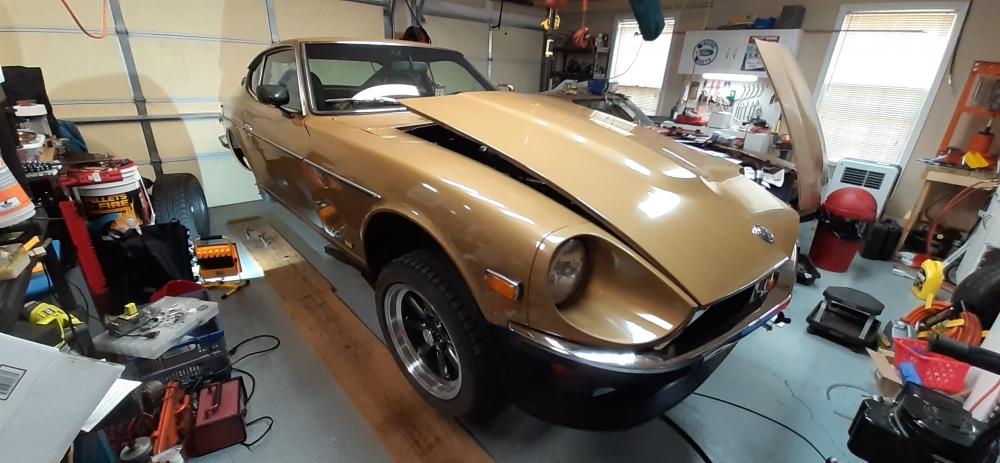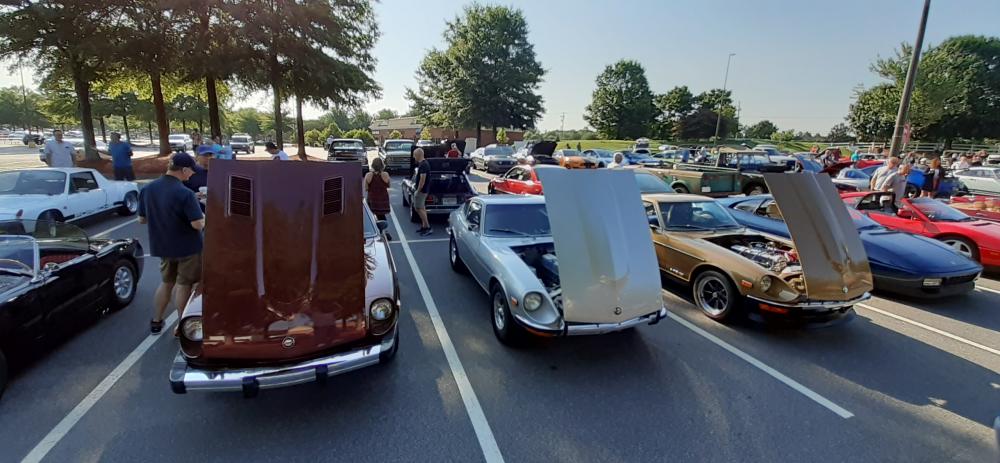Everything posted by SteveJ
-
Blown Brake Light Fuse
I did this drawing several years ago to address some of the confusion on the turn signal/hazard light/brake light circuit. While it is specific for the 72, the 70 should be pretty close. Some of the connectors may be different. https://fiddlingwithzcars.wordpress.com/2013/01/20/hazard-switch-brake-light-turn-signal-circuit-analysis/
-
Farewell Sale - Early 1974 Datsun 260Z Parts
Um, he didn't say he was the first owner, so what he said was correct from an English grammar standpoint. He was saying he owned it 43 years. Was there a point to your reply?
-
Drier recommendations
I looked in the AC section of the 74 FSM. It says that the switch is a high pressure switch. I wouldn't be surprised if Amazon doesn't have a high pressure switch (or high/low pressure switch) somewhere that has the same threads as the switch Jim used.
-
Drier recommendations
Try Nostalgic AC. https://nostalgicac.com/driers-valves/driers.html
-
SS Bumpers from Vietnam
It's good you didn't go with the rubber strips. Today I was tightening/replacing hardware on the rubber strips. I'm glad I have the portacool in the garage when I want to work on the car this time of year.
-
Coil Question
If it's not the coil, consider going from the Crane to the Pertronix. It's stupid simple to install the Pertronix.
-
Coil Question
I would not use a 0.4 ohm coil unless you are keeping the ballast resistor. I wouldn't go below 1 ohm unless you are keeping the ballast resistor. I was suggesting the 3 ohm down to 1 ohm since it sounded like @7tooZwas planning on jumpering out the resistor. Using a 0.6 ohm coil with no resistor would mean about 20A current through a 14 gauge wire.
-
Coil Question
You might see better performance with the 1.5, but the 3 should work. The spark may be a little weaker.
-
Coil Question
I was worried about the tach performance with a 1 ohm coil. This morning I installed a Pertronix with a 1 ohm coil into a car and bypassed the ballast. The tachometer appeared to be functioning correctly. @7tooZ - You could go with a Pertronix 1.5 ohm coil (40011 or 40111) or MSD 82023 coil. It looks like you can bypass the ballast resistor with no ill effects, too.
-
[2021] What Did You Do To/with Your Z Today?
And here's a video from walking around the lot at the same meet.
-
Coil Question
Pertronix Flamethrower 3.0 Ohm coil...You can get it in oil-filled or epoxy.
-
Coil Question
Are you still using the ballast resistor?
-
280z master fuse list?
I didn't say there was a list. I said it is all laid out. The list I gave was from looking at the page in the BE section for the voltmeter and going back to the wiring diagram to identify all of the branch circuits. The power for the hazard lights does not come off the same fuse as the voltmeter unless someone changed how your car is wired.
-
Coil Question
Many coils are oil filled for the heat dissipation media. You may see residue around the center post of the coil. Some auto manufacturers did vertical mounting of the coil to reduce the chance of losing the oil. However, the oil will break down as it ages, providing less heat removal.
-
280z master fuse list?
Well, it's laid out in the wiring diagram with more detail in the BE section of the FSM. For the fuse that is for the voltmeter, you also have Brake Warning Lamp Check Relay Turn Signals (passing through the Hazard Switch) Seat Belt Warning Timer Unit Fuel Level Warning Lamp Backup Lamp Switch (Manual Transmission) Inhibitor Switch (Automatic Transmission)
-
Coil Question
The coil is a step-up transformer. It is composed primarily of wire, insulation, and material to help dissipate heat. If the insulation breaks down, you would see a weaker spark or no spark. Are you having a problem with your car? If so describe when it started and under what conditions.
-
[2021] What Did You Do To/with Your Z Today?
I took the Z to our local "Worship" car meet. When the local Cars and Coffee (known as Caffeine and Octane here) got too big, some people started a smaller show for the same time slot that attracts more of a "car people" crowd. Anyway, there were 8 S30s there with the 280Z being the most prevalent. I got to see @jonathanrussellfor the first time in about 4 years, too.
-
SS Bumpers from Vietnam
No excuse, @Av8ferg. I went to high school in the 80s, and I knew that one. 😉
-
SS Bumpers from Vietnam
I use the brackets for a GoPro mount
-
Haltech wiring ignition basic questions
If the voltage is too low, yes, you can hurt some electronics.
-
Haltech wiring ignition basic questions
Did the Haltech come with wiring instructions? If so, post them. It's hard to guess what you are trying to do. It would probably be easier for me to draw it up correctly for you. For the right price, I could even make a junction harness for you to plug in between the dash harness and ignition switch. Why hack into the wiring if you don't need to? The drawing you posted on the Pertronix has a flaw that could lead to hard starting. Having a couple of diodes in the right place would give the Pertronix the correct voltage when the car is starting without trying to power the ignition circuit.
-
Haltech wiring ignition basic questions
Meh. Even I don't believe much of what I say. 😉
-
Haltech wiring ignition basic questions
In the START position, the G/W wire goes through the tachometer and comes out B/W. The B/W wire goes to the positive on the coil. In the ON position, the B/W wire goes to the ballast resistor and comes out G/W. The G/W wire goes through the tachometer and comes out B/W (different B/W wire than at the switch). The B/W wire goes to the positive on the coil. The B/W wire from the ignition switch (ON position) branches off to a few different functions. The most important one is going to the fuse box. Downstream of the 20A fuse it powers the turn signals, tachometer, brake warning light, and switched source for the alternator/voltage regulator. (Note: for some of these circuits, the wire is Green, but it came from the same source.) Before the fuse box, there is also a branch off the B/W wire that is Green. It goes through an inline fuse and comes out Green. That is for the electric fuel pump. It might have been re-routed for the Nissan modification that actually installed an electric fuel pump in the North American 240Zs. (Long story...) The B/W wire also provides power for a couple of emissions related circuits, but I'm guessing you or a previous owner have defeated and/or removed most of that. For the 240Z, the black wire off the coil is grounded by the points when they collapse.
-
Fuel pouring out the front of the carbs
As @Captain Obvious has mentioned in the past the "fuel pressure regulator" in a stock 240Z or 260Z is the orifice on the return line of the fuel rail. The 280Z was the first with a stock FPR.
-
Parts Wanted: Fair price paid for 240z parts I need
An hour isn't enough.








